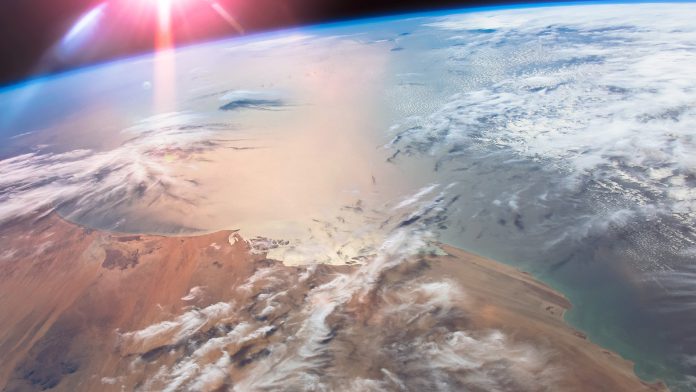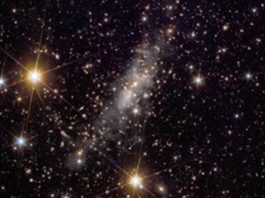Astrophysicists have calculated the likelihood that Earth’s climate was exposed to cold, harsh interstellar clouds, a phenomenon not previously considered in geologic climate models.
Around two million years ago, Earth’s climate had fallen into a deep freeze, with multiple ice ages coming and going until about 12,000 years ago.
Scientists theorise that ice ages occur for a number of reasons, including the planet’s tilt and rotation, shifting plate tectonics, volcanic eruptions, and carbon dioxide levels in the atmosphere.
But what if drastic changes like these are not only a result of Earth’s environment but also the Sun’s location in the galaxy?
In a new paper published in Nature Astronomy, lead author and astrophysicist Merav Opher—an astronomy professor at Boston University and fellow at Harvard Radcliffe Institute— found evidence that some two million years ago, the solar system encountered an interstellar cloud so dense that it could have interfered with the Sun’s solar wind.
The authors believe this shows that the Sun’s location in space might shape the history of Earth’s climate more than previously considered.
Interstellar clouds placed our Solar System outside the heliosphere
Our Solar System is covered in a protective plasma shield that emanates from the Sun, known as the heliosphere.
It protects us from radiation and galactic rays that could alter DNA, and scientists believe it’s part of the reason life evolved on Earth as it did.
According to the latest paper, the interstellar cloud compressed the heliosphere in such a way that it briefly placed Earth and the other planets in the Solar System outside of the heliosphere’s influence.
Opher, who’s an expert on the heliosphere, said: “This paper is the first to quantitatively show there was an encounter between the sun and something outside of the Solar System that would have affected Earth’s climate.”
Now, she’s shedding new light on how the heliosphere – where the Sun moves through space –could affect Earth’s atmospheric chemistry.
“Stars move, and now this paper is showing not only that they move, but they encounter drastic changes,” Opher explained.
Studying the patterns of cold clouds
To study this phenomenon, the team looked back in time, using sophisticated computer models to visualise where the Sun was positioned two million years in the past.
They also mapped the path of the Local Ribbon of Cold Clouds system, a string of large, dense, very cold clouds mostly made of hydrogen atoms. Their simulations showed that one of the clouds close to the end of that ribbon, named the Local Lynx of Cold Cloud, could have collided with the heliosphere.
If that had happened, Earth would have been fully exposed to the interstellar medium, where gas and dust mix with the leftover atomic elements of exploded stars, including iron and plutonium.
“The outside pressure from the Local Lynx of Cold Cloud could have continually blocked out the heliosphere for a couple of hundred years to a million years,” said Opher.
“But as soon as the Earth was away from the cold cloud, the heliosphere engulfed all the planets, including Earth.”
Will we ever discover how cold clouds affected Earth’s climate?
It’s impossible to know the exact effect the cold clouds had on Earth’s climate, such as whether they could have spurred an ice age.
However, the sun has likely encountered a couple of other cold clouds in the interstellar medium in the billions of years since its birth.
Opher and her collaborators are now working to trace the Sun’s location seven million years ago and even further back.
Data collected by the European Space Agency’s Gaia mission, which is building the largest 3D map of the galaxy and giving an unprecedented look at the speed at which stars move, can pinpoint the location of the sun millions of years in the past, as well as the cold cloud system.
Opher hopes this paper will open the door to more exploration of how the Solar System was influenced by outside forces in the deep past and how these forces have shaped Earth’s climate.








